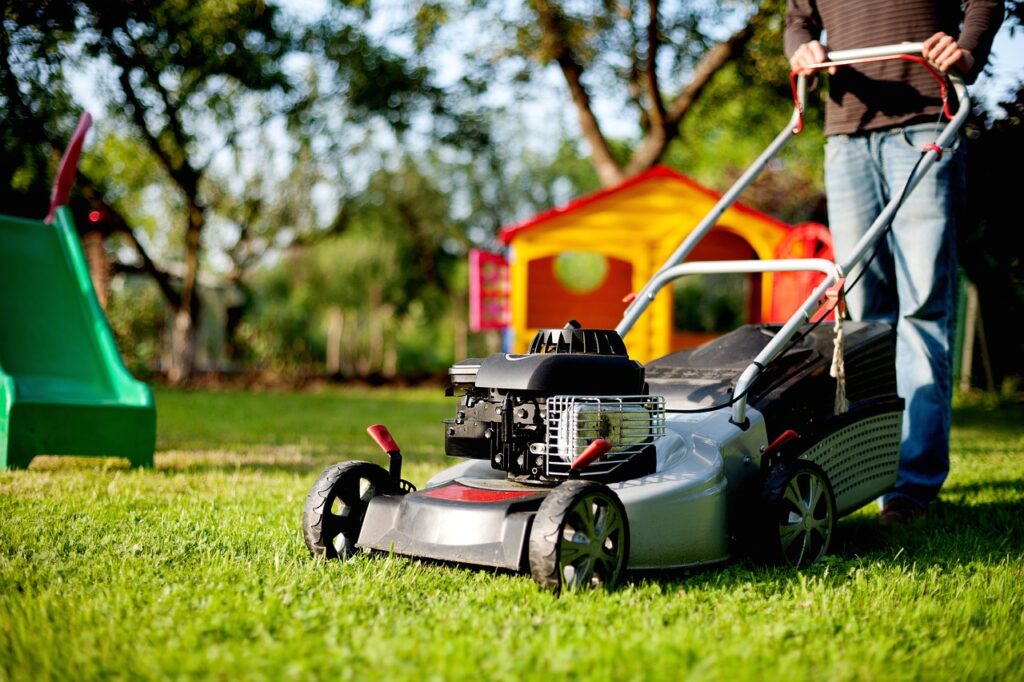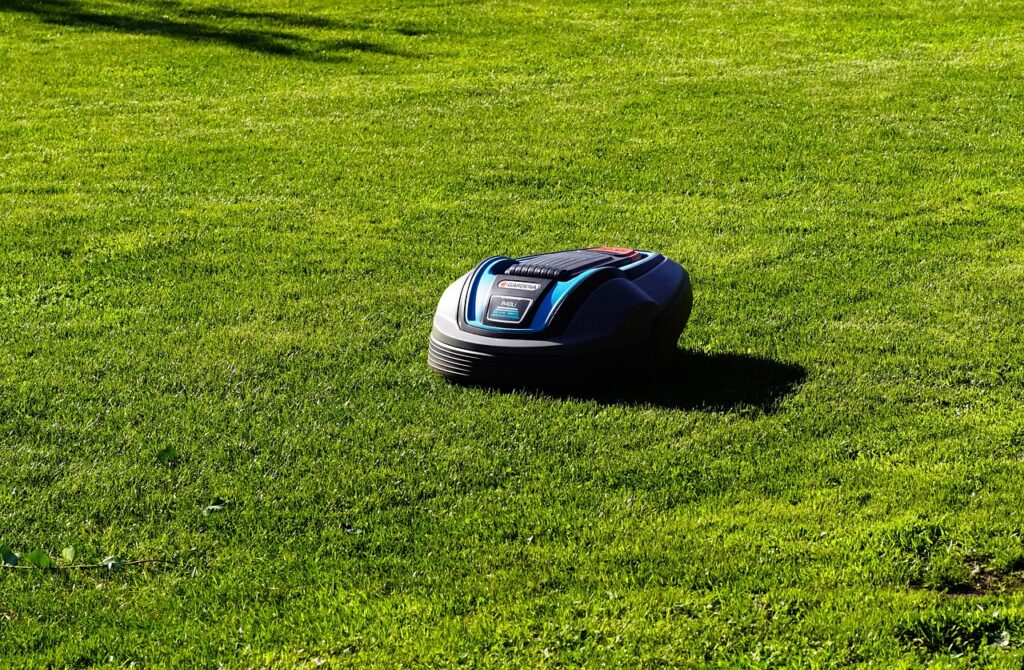While there is no clear-cut definition of what constitutes a “large” lawn—some may consider 1,000 m² as large, while others might reserve that label for areas of 5,000 m² or more—it’s generally agreed that spaces like playgrounds, sports fields, large gardens, and parks, often spanning thousands of square meters, require a mower with specific capabilities. In the private sector, any area larger than 1,000 m² is typically regarded as large, influencing the key features needed for an effective robotic mower.
Maximum Coverage Capacity of Robotic Lawn Mowers
When purchasing a robotic lawnmower, one of the most important factors to consider is its area output, which is typically specified by the manufacturer. Small models may cover around 150 m², while larger models are capable of handling extensive spaces, such as sports fields and parks, with a maximum area output of up to 10,000 m².
It’s essential to differentiate between the recommended area output and the maximum area output. The recommended area output represents a more realistic estimate based on typical garden conditions, accounting for factors like obstacles, rather than ideal, obstacle-free environments.
It’s a good idea to allow some buffer between the mower’s recommended area output and your actual lawn size, especially if you plan on taking breaks or using the robot intermittently. Some manufacturers base their area output on continuous use, so the mower may quickly reach its limits if run without breaks or if the area is calculated too tightly.
Powerful Batteries for Longer Operation
For larger areas, robotic lawnmowers equipped with powerful batteries are essential. A stronger battery means the mower can cover more ground before needing to recharge, reducing the frequency of trips to the charging station. This is particularly advantageous when maintaining large lawns or expansive parks, as it increases overall efficiency and minimizes downtime.
Cutting Width for Greater Efficiency
The cutting width of a robotic lawnmower plays a crucial role in how quickly it can mow large areas. A wider cutting width allows the mower to cover more ground in the same amount of time. For instance, a mower with a 56 cm cutting width can mow twice as much area as one with a 28 cm cutting width within the same time frame. Additionally, a larger cutting width typically means more blades, which helps achieve a cleaner, more even cut.
Advanced Control Features
When it comes to large areas or complex landscapes, having the ability to locate and control your robotic mower is invaluable. Mowers equipped with GSM modules allow for easy programming through apps or voice commands. A GPS module not only helps track the mower for theft protection but also ensures that it can be quickly located on the property in case of a malfunction. This added functionality makes managing large properties much more convenient and secure.
Flexibility with Multiple Mowing Zones
Large gardens often consist of various zones separated by paths, flower beds, or other landscaping features. To efficiently mow such areas, robotic mowers that support multiple mowing zones are ideal. These models can be programmed to handle different zones, including main and secondary areas, and can even be set to start at designated points within each zone. This flexibility allows the mower to operate seamlessly across a divided property, ensuring every area gets the attention it needs.
Tackling Uneven Terrain with Ease
For robotic lawnmowers to navigate uneven terrain and handle slopes, especially during wet conditions, it’s essential to choose models equipped with traction wheels. These specialized wheels provide excellent grip, reducing the risk of slippage and ensuring smooth movement across the lawn.
In addition to traction, it’s crucial to consider the mower’s maximum incline capacity. Not all robotic mowers are built to handle steep slopes. Some may struggle or even stop altogether when faced with too much of an incline, so it’s important to select a model designed for the specific gradient of your lawn.
A free-swinging mowing deck is another valuable feature for tackling uneven ground. This design allows the deck to follow the contours of the terrain, providing a more consistent and precise cut. By hugging the ground, it ensures that the mower delivers an even finish, even on bumpy or sloped surfaces.
Additional Features for Robotic Mowers for Large Areas
Many robotic mowers are equipped with a range of advanced sensors and features that enhance their performance, especially when dealing with large areas:
- Tilt and Slope Sensors: These sensors automatically stop the blades if the robotic mower is lifted, ensuring safety and preventing damage.
- Rain Sensors: These sensors detect rain and prompt the mower to return to its charging station to avoid mowing in wet conditions. However, in some cases, frequent rain pauses can reduce the mower’s efficiency and overall area coverage.
- 360° Sensors: These sensors help the mower detect obstacles in its path and avoid them in a timely manner, preventing unnecessary turning or detours, which can save time and improve mowing efficiency.
- Mulch Removers and Self-Cleaning Wheels: These features help reduce maintenance efforts by preventing grass clippings from accumulating on the mower, ensuring consistent performance even in dirtier conditions.
- Edge-Cutting Function: This feature ensures that the mower can handle the edges of your lawn, reducing or eliminating the need for manual trimming, especially when the lawn edges are properly designed.
- Turbo Cutting Function: Some mowers come with a turbo mode, which is ideal for handling tougher, overgrown grass, making them especially useful for the first cut of the season or in areas with tall, dense grass.
Other considerations, such as the noise level of the mower and the presence of an anti-theft device, are primarily based on personal preferences. The mower’s maneuverability is less of a concern for large areas, as the focus shifts to efficiency and coverage.
Alternative: Two Robotic Mowers for Large Areas
While there are robotic mowers designed to handle lawns of up to 30,000 m², these professional models can be costly. An alternative solution for large lawns is to use two robotic mowers, splitting the workload between them.
To set this up, define the lawn area for each mower using perimeter wire and assign each mower a charging station. Since the wires are close together, you can adjust the induction loop frequency to prevent interference, allowing both mowers to work simultaneously on the large area.
Conclusion
Choosing a robotic lawnmower for large areas requires a different set of considerations than for smaller, more intricate gardens. Efficiency is key, with an emphasis on larger cutting widths, a powerful battery, and high area output. Other features like sensors and specialized functions can further enhance the mower’s performance and ease of use. Keep these factors in mind to select the best robotic mower for your large lawn.


